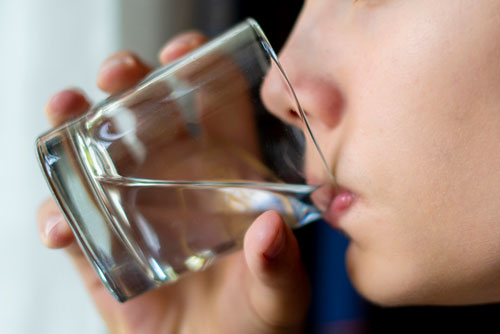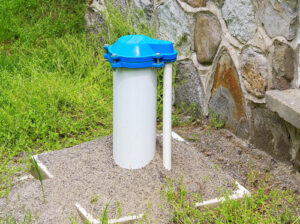
Protecting your home’s drinking water is important every day, particularly if you are one of the millions of Americans who rely on a private well. Living in Maryland means being prepared for natural disasters like hurricanes and tropical storms. As a well owner, you need to know how to prepare your well for a natural disaster to reduce damage. You should also familiarize yourself with the steps you should take after a natural disaster occurs so that you can act quickly and limit the damage.
How Do Natural Disasters Impact Your Well?
Flooding, landslides, earthquakes, tornadoes and other natural disasters can have a serious impact on your drinking water as they introduce contaminants into your private well. Flooding is one of the most hazardous parts of a natural disaster.
Before you can prepare your well for a natural disaster, you need to understand some of the issues that can occur and how natural disasters impact your well:
- Flood Conditions: Water that is flowing through your yard often carries debris, some of which is large and some of which is small. Large pieces of debris can loosen well hardware or distort the casing. Smaller debris, like coarse sediments, can erode components of the pump or even enter the well and contaminate it. Depending on the severity of the flood, it could even cause the well to collapse entirely.
- Water and Electricity: Water does not mix with electricity, so many homeowners with private wells find out that the wiring or electrical systems for their pump have been impacted. This could require simple repairs or replacement.
- Earthquake Damage: While earthquakes are not common in Maryland, they can still occur. One of the biggest problems that earthquakes lead to is cracking or damaging the well casing.
How Can You Prepare Your Well for a Natural Disaster?
One of the most important things you can do to prepare your well for a natural disaster is ensuring it is in good condition. Get in the habit of walking by your well on a regular basis to make sure that nothing is disturbed or wrong. Additionally, you should have it inspected annually to fix anything that should be repaired. If there is a small problem with your well already, it can be exacerbated by flooding or compromised as a result. Pay attention to any directives that your local or state health department gives when you prepare your well for a natural disaster.
What Should You Do After Your Well Floods?
Aside from taking time to prepare your well for a natural disaster, you should also know what to do after a flood has occurred.
- Stay away from the flooded area if you have a well pump, as you might be at risk of electric shock.
- Before you turn on the pump again, call an electrician or well contractor to visit the home and ensure there is nothing wrong. A well contractor can also take care of cleaning and disinfecting the well before the pump is turned on again.
- Until you have the chance to disinfect the well or have someone come to your home to do the disinfection, do not drink from the well. It could contain contaminants that are dangerous to consume and make you sick.
- Once the pump is turned back on, take time to pump the well until the water runs clear so that all flood water is taken out of the well.
It’s best to wait for a contractor to arrive at your home and handle disinfection, but if you need to disinfect your well after flooding in an emergency, there are steps that you can take to do so.
- If your water looks cloudy, run water from an outdoor hose bib until the water is clear and free from any debris or sediment.
- If your well has a sanitary seal with a vent or plug that can be removed, do so. If your well is bored or dug, lift off the cover so that you can pour bleach inside.
- If you use a water treatment system from Hague Quality Water of Maryland you should switch it over to bypass mode before you start adding bleach.
- Take a gallon of bleach and funnel (if necessary) and pour bleach down into the well casing. NOTE: Not all units should be disinfected with bleach. Consult the manufacturer’s recommendations before using bleach.
- Run water from your outdoor hose into the well casing. You should start to smell chlorine coming from the hose, which means that you can turn off the outside hose.
- Turn on all of your cold water faucets inside and outside of the home until you smell chlorine coming from each faucet. After you smell chlorine, you can turn the faucet off.
- Now that the faucets are off, wait 24 hours before turning them back on. Make sure that everyone in your house knows not to turn on the faucets or drink, wash, cook, bathe, or use the water. It has high amounts of chlorine during this period as it cleans your well and water, so ingesting it or coming into contact with it would be dangerous.
- After the waiting period ends, turn on the outside hose and run the water in a pencil thin stream into an area where it won’t be dangerous to plant life or local water supplies. Once the chlorine odor is gone, turn the water off again.
- At this point, the process is complete.
- Within 7-10 days after you finish disinfection, have your water tested by Hague Quality Water of Maryland to ensure that there is no contamination. The sooner you test your water, the better.
Maintain Your Well with Hague Quality Water of Maryland
For your peace of mind, protect yourself and your family from contaminated water by calling Hague Quality Water of Maryland. We’ll thoroughly analyze your water and recommend an appropriate water treatment system like the Hague WaterMax®. The Hague WaterMax® comes with computerized, fully-customizable controls, as well as a built-in dirt and sediment filter, so you can feel confident you’re getting the best water possible.
Did you know Hague Quality Water of Maryland is making water testing even easier? With our at-home water test kit, you’ll be able to test your water from the comfort of your own home. Simply take a sample of your water, send the kit to us to analyze, and you’ll receive your results in the mail within one week. Once you have the results, our water specialists will come to your home for a no-cost consultation to determine the best solution for your water. To purchase your kit today, click here. For additional assistance, call Hague Quality Water of Maryland at (410) 757-2992.




